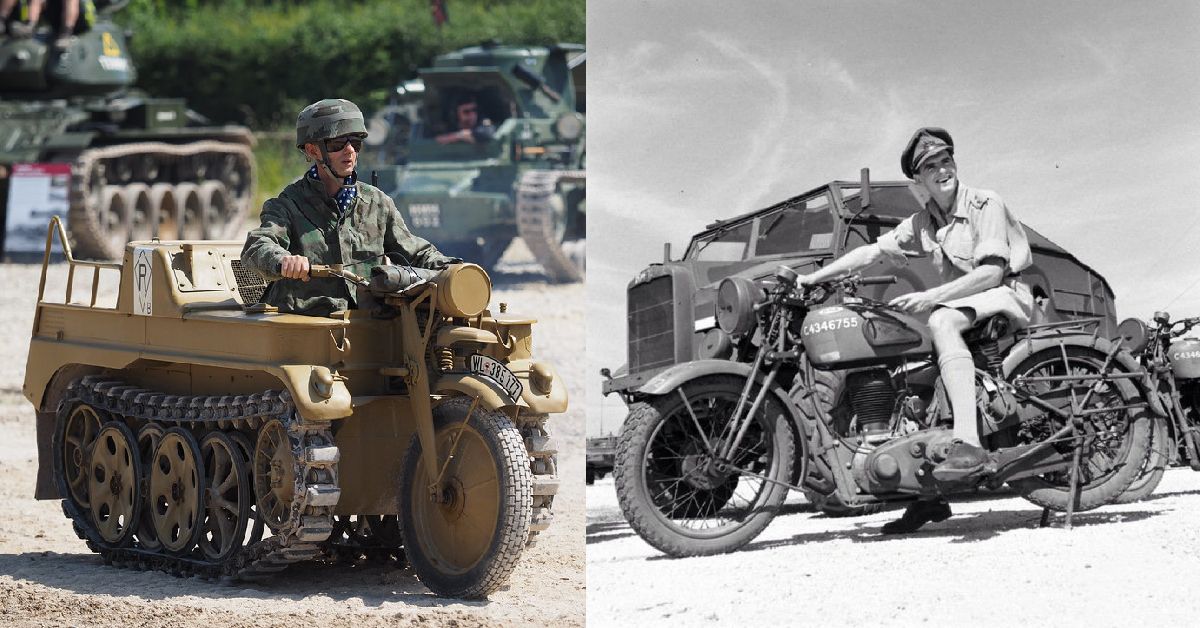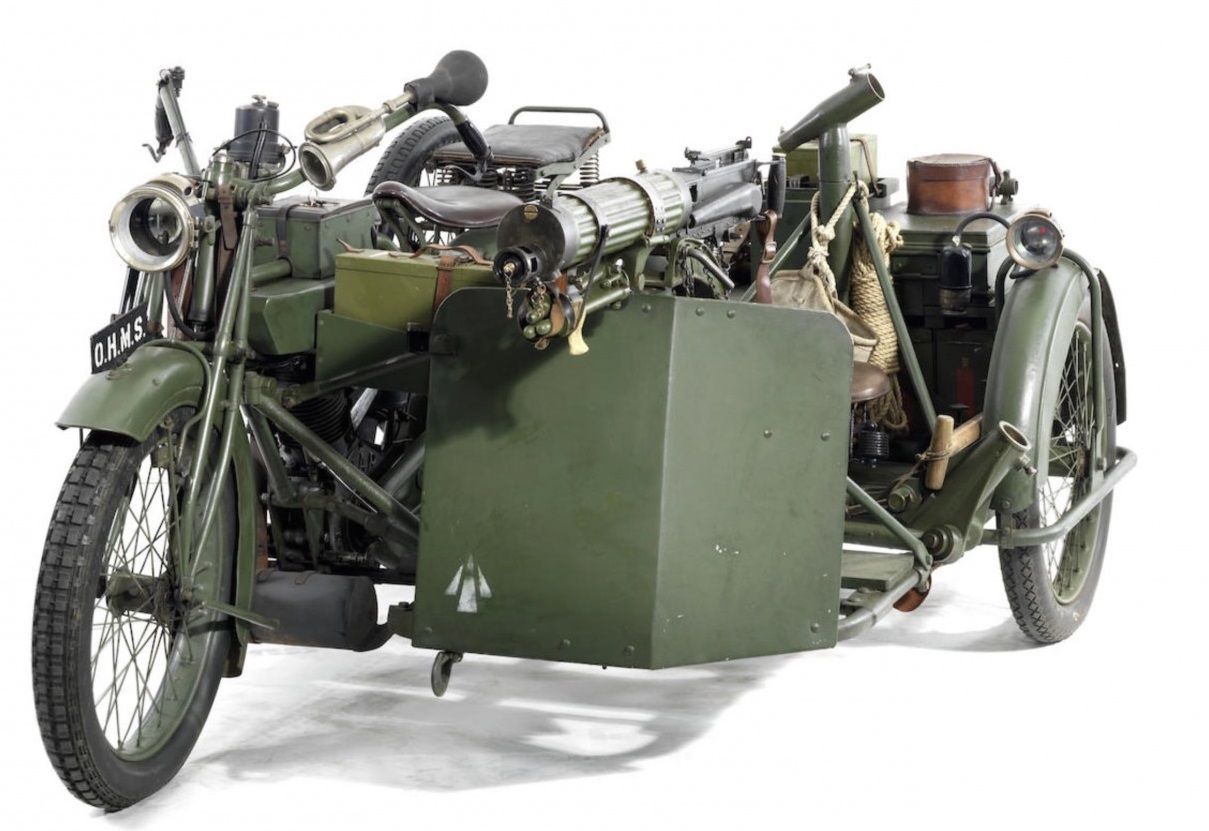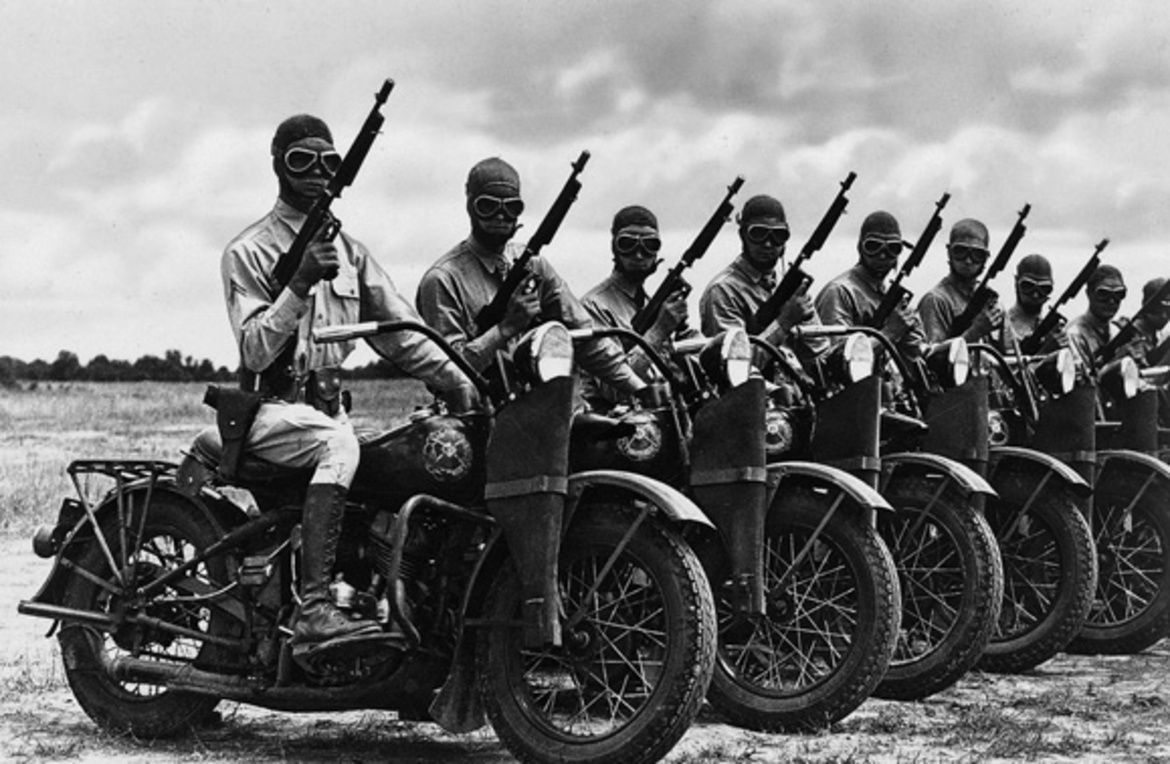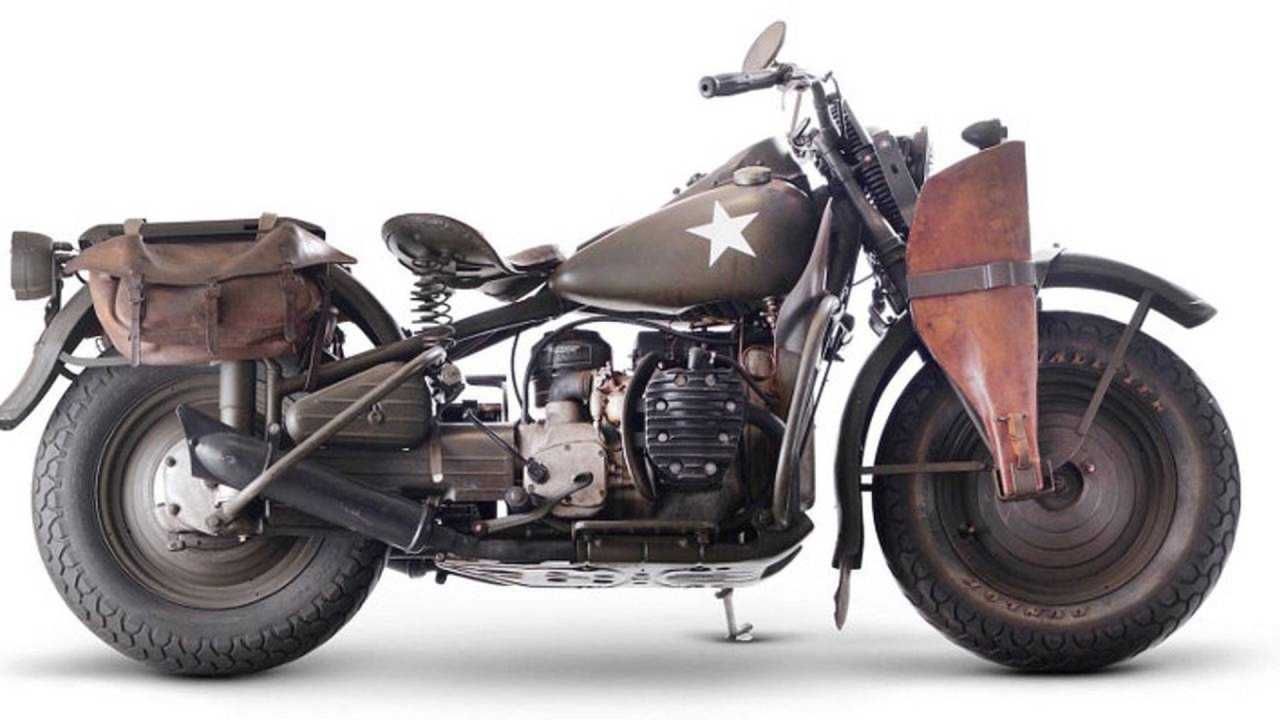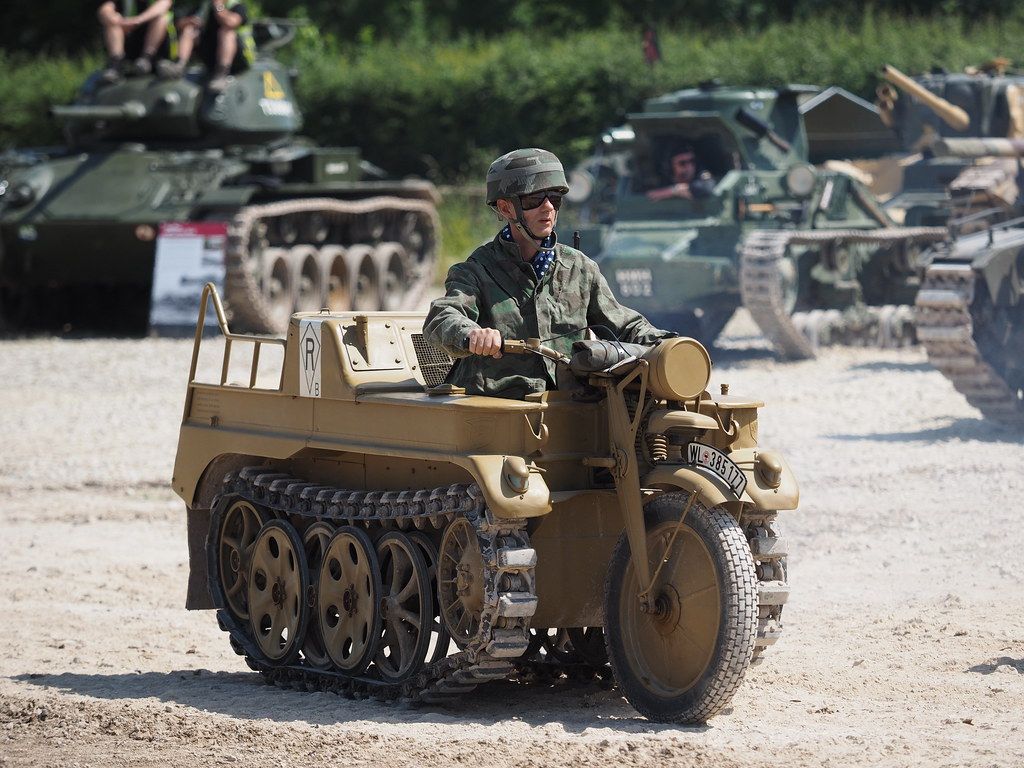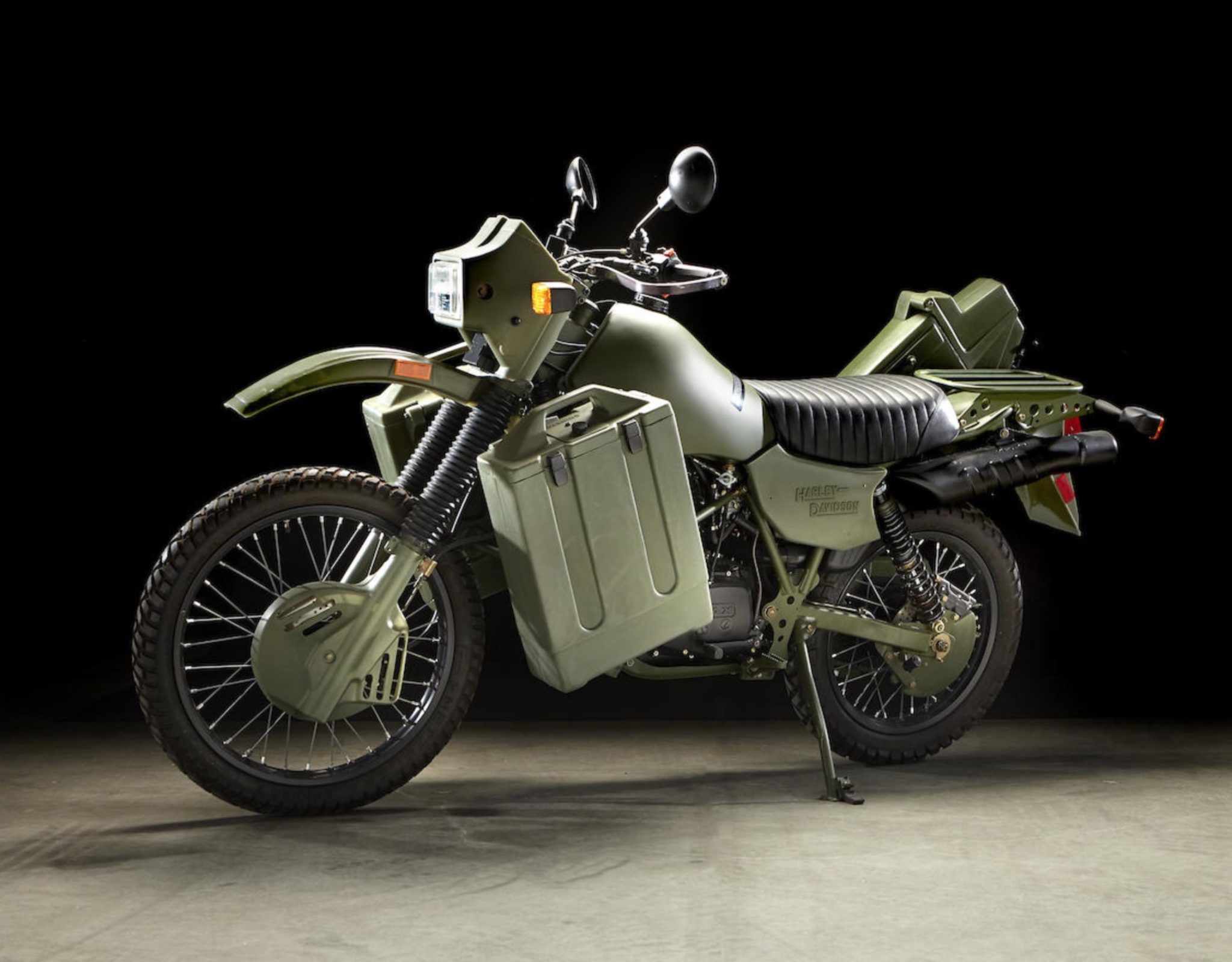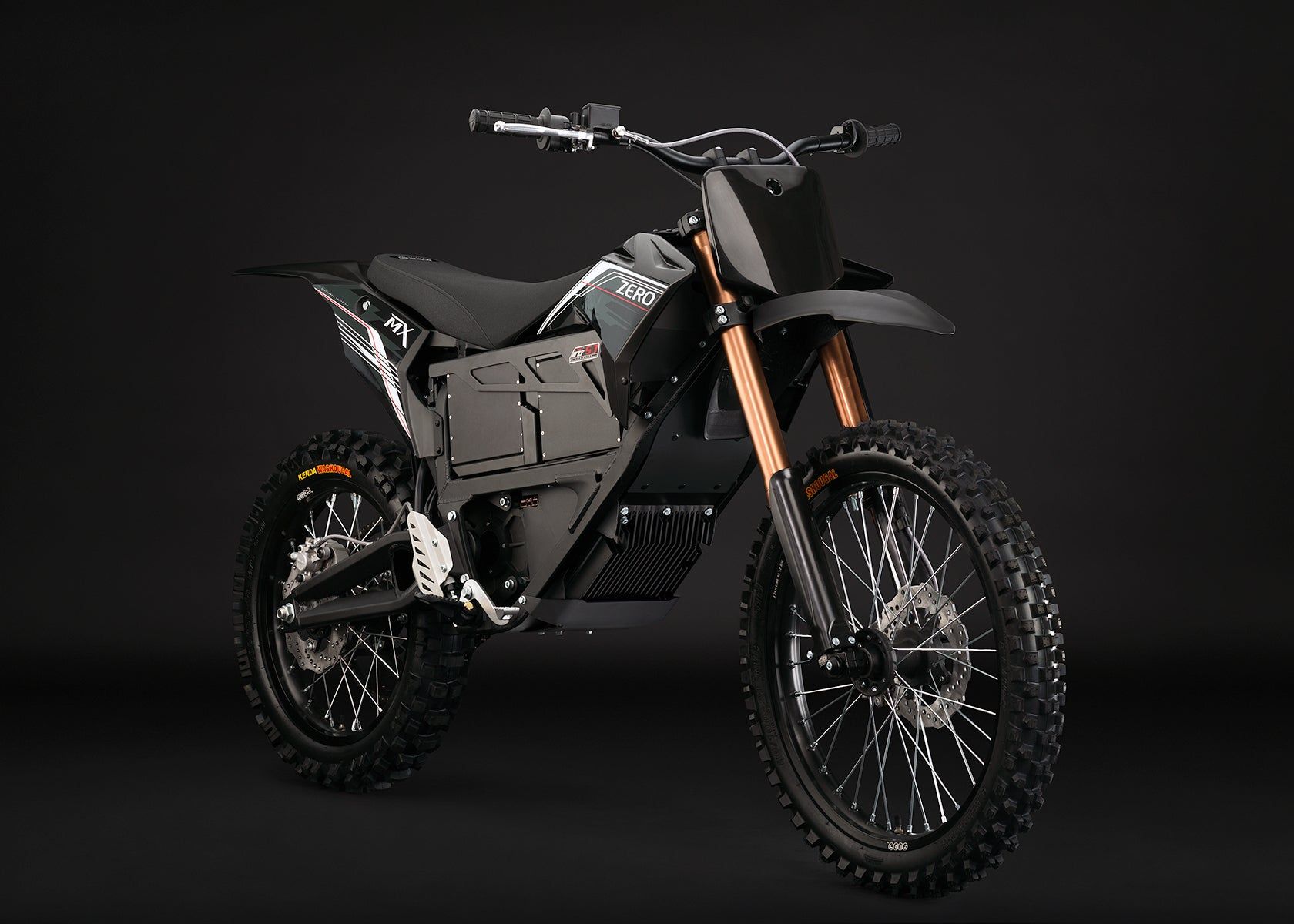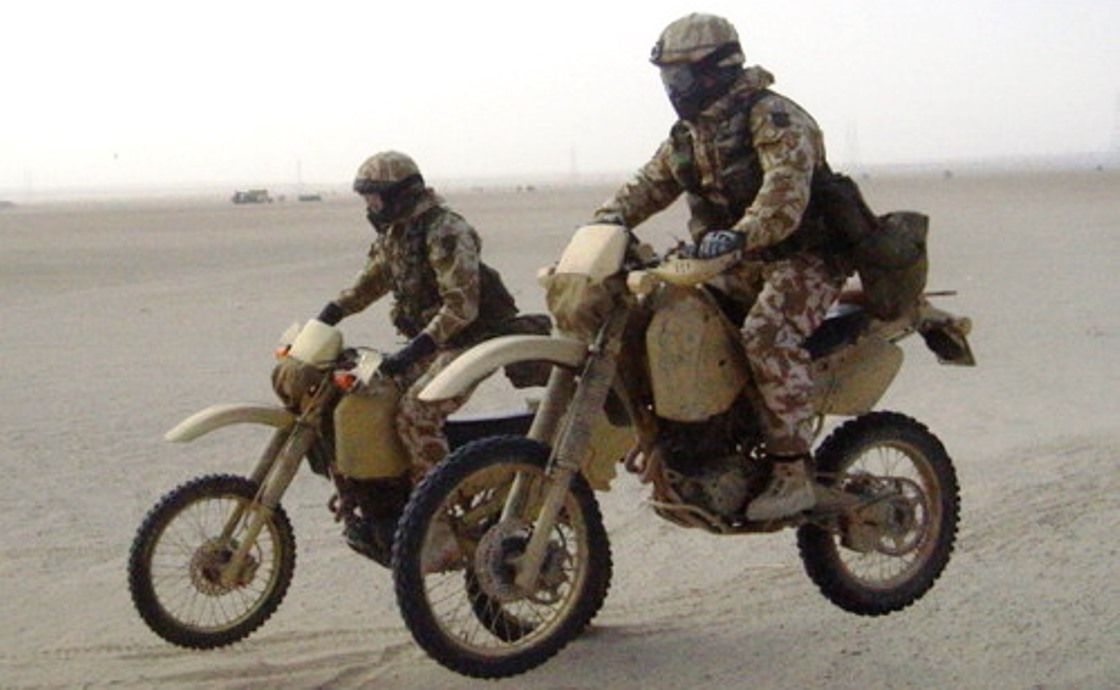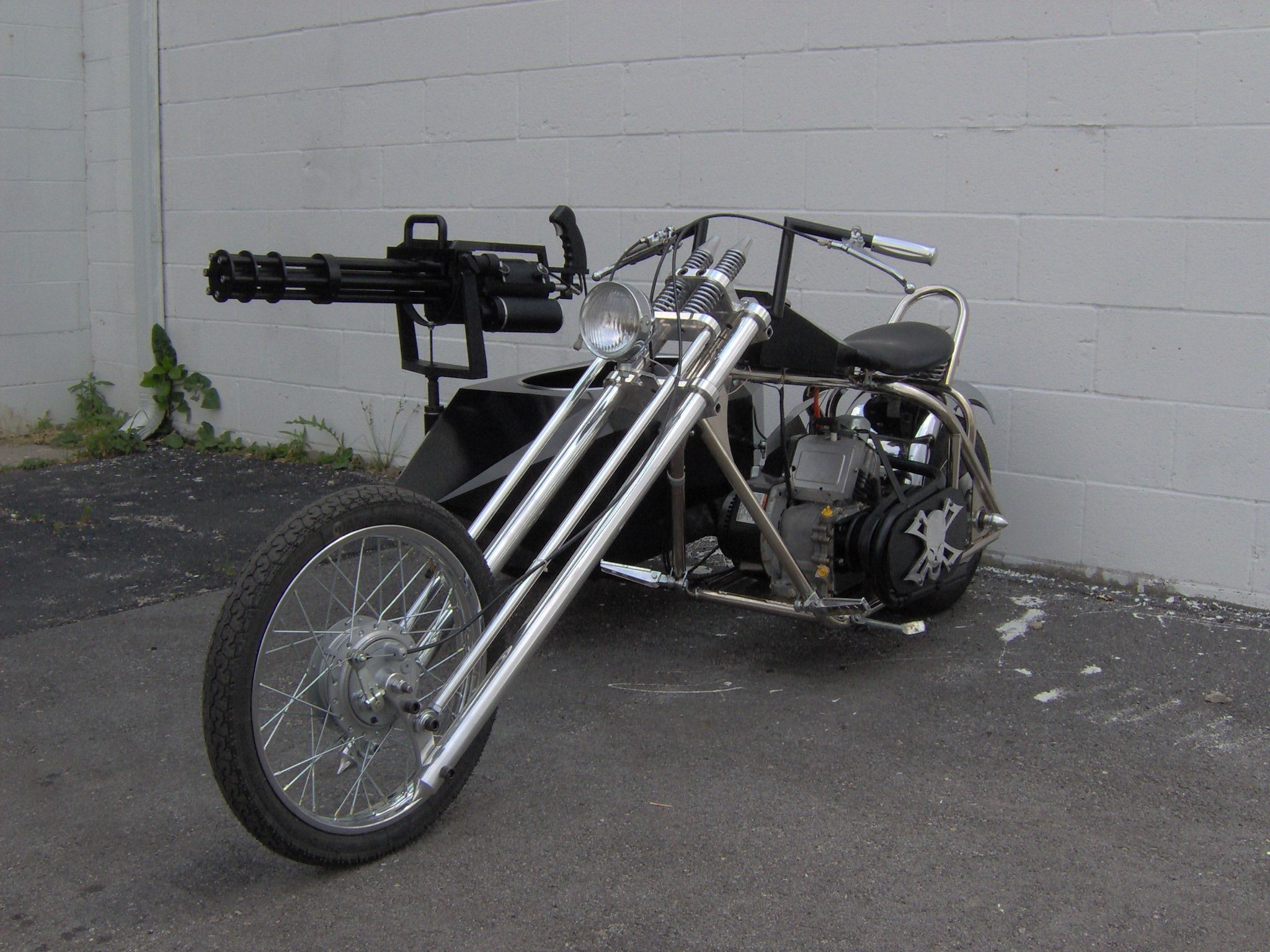Like the dogs of war (and the dolphins - yes, that's a thing), some of the greatest heroes of modern conflict are also the least well known.
Motorcycles served both sides through two World Wars, in much larger numbers than many people may realize, and certainly in a way that was far more important than the unflatteringly small number of history pages devoted to them reflects.
Across Time And Geography
American, British, German, Japanese, and Russian bikes saw action on and behind the lines; and by Russian I also mean American, specifically the 26,000-odd Harley-Davidson WLA two-wheelers supplied to the Soviets under the lend-lease program.
Motorbikes were at the forefront in other conflicts as well, both before the First World War and after the Second, in Korea, the Falklands, and Desert Storm, and their unfairly unsung contribution continues to this day. As technology continues to advance, and particularly as electric bikes come more and more to the fore, that invaluable input looks certain to carry on.
Early Days
Even as the Great War raged in Western Europe, the US Army was engaged in numerous actions across the south-west, in the States bordering Mexico and into Mexico itself, during the Border War that grew out of the Mexican Revolution. Pershing's forces utilized Harley Davidson motorcycles as an adjunct to mounted cavalry, some of them fitted with machine guns. Lessons from those encounters helped to shape future tactics, and hastened the demise of genuine horse-powered warfare.
In the European theatre, the US Army was also mounting up, shipping more than 80,000 bikes across the Atlantic; Harley 17 Fs and Js , and over 50,000 Indian Powerplus Big Twins. WWI combat bikes saw service not only as mounts for despatch riders, but as a rapid means of transporting medical supplies and wounded soldiers, and in some cases for forward-deploying entire infantry companies.
The British also used motorcycles heavily between 1914 and 1918. Some 30,000 Triumph Model H, and over 100,000 Norton WD16H bikes went to the front lines.
Big Bikes For Big Fights
World War II ushered in a new age for much previously unseen military technology, and new uses for everyday machines. Motorcycles were used less in the forefront of the fighting than they had been in the previous conflict, but just as was the case two decades earlier, the speed, maneuverability, versatility, and ability to get into and out of tight spaces quickly, proved the value of bikes to both sides.
Perhaps the most famous two-wheeler of the Second World War was the BMW R71 , followed by the R75 series, which, along with the Zundapp KS750 (or at least pictorial impressions thereof) graced the pages of war comics read by generations of boys the world over; sidecar and machine gun mounted, Nazi-helmeted Nazis yelling "Achtung", Sgt Rock and others sending them to meet their maker, with everything from grenades to bridge demolitions. In reality the Germans employed more motorcycles in military service than anyone else, with some 200,000 units accompanying the Wehrmacht on both European fronts as well as in the deserts of North Africa.
As with the most successful bikes of WWI, these, as well as the American Harleys and Indians, and the British BSAs and Royal Enfields, found favor among the troops for their simplicity and reliability. Big, low-compression engines, an omnivorous taste in fuel, and the ability to negotiate mud, sand, and snow made them invaluable tools as well as outright weapons.
The 750cc, shaft-drive R75 was highly regarded by the Allies as well, so much so that the US Army sent a few captured bikes back to America, where they were dismantled and back-engineered into the Harley-Davidson XA. Stalin's Russia also copied the R75, as did the Chinese; 10,000 were built in Siberia alone.
Harley WLAs went to Korea as well, where they encountered Soviet-built M-72s in North Korean military service. Three decades later, British forces were employing the then brand-new Armstrong MT500 dirt bike, for recon and generally being cool, and the US Army took the same machine (by then owned and built by Harley Davidson) to Iraq in the first Gulf War, accompanied by Kawasaki KLR 250s.
Riding On Lightning
Scrapping in the Sandpit - which appears to be a never-ending story - saw US Forces upgraded, by the mid-2000s, to the diesel (or jet fuel, it's not a fussy eater)-powered 650 cc big brother of the little Kwaka, and Special Forces continue to ride into combat on the Honda-CR-250 derived Christini AWD -450.
The future for motorbikes in warfare, like the future for many things on wheels, is electric; and that's primarily because electric bikes are quiet bikes, and the future is all about stealth. In this case stealth isn't just concerned with noise, but also with heat. Infrared (IR) is the new radar, for bikes and tanks as much as for aircraft, and electric motors just don't create anywhere near as big a thermal signature as anything that runs by burning something.
On top of that they can be made smaller and lighter, though that's not to say that small, lightweight motorbikes haven't been a thing before - going back to WWII, the Flying Flea was a 125cc Royal Enfield machine that weighed just 130lbs and could fit into a paratrooper's leg pocket (almost).
A special mention has to be made regarding the bikers of war, as well as the bikes. While the Hell's Angels never actually went to Vietnam as a special guerilla force, they did actually offer to; and while they didn't actually take their bikes, a bunch of crazy Dutch and German bikers did actually go to war against the Islamic State in 2014, joining up with Kurdish Forces, helping the Free World to fight the Good Fight, like the good guys they really are.

